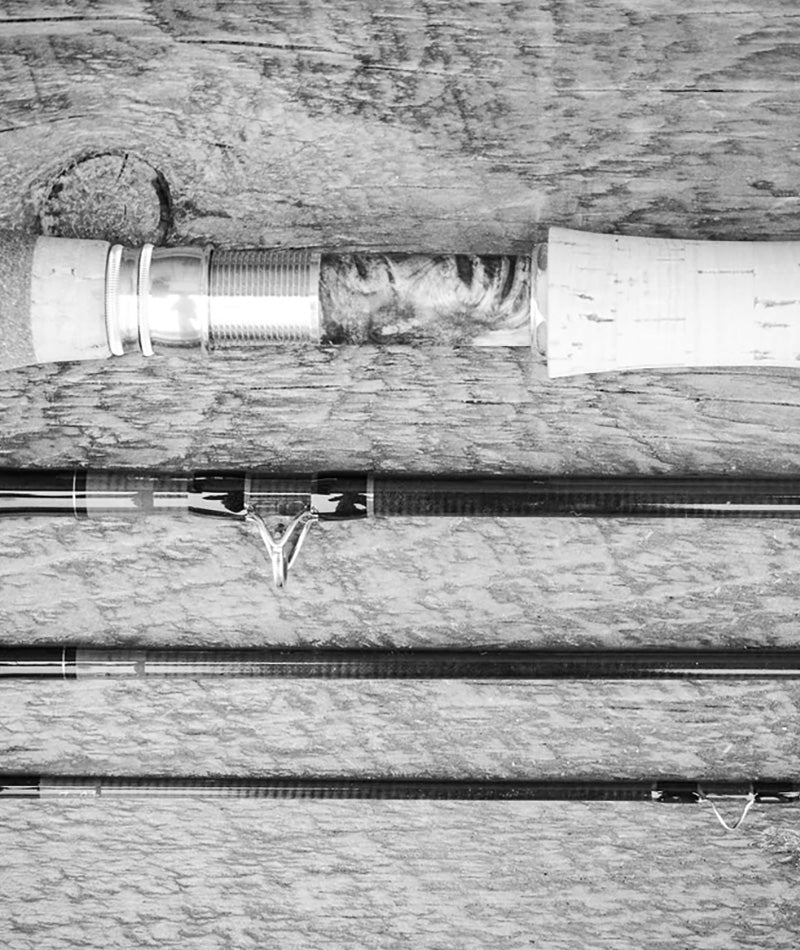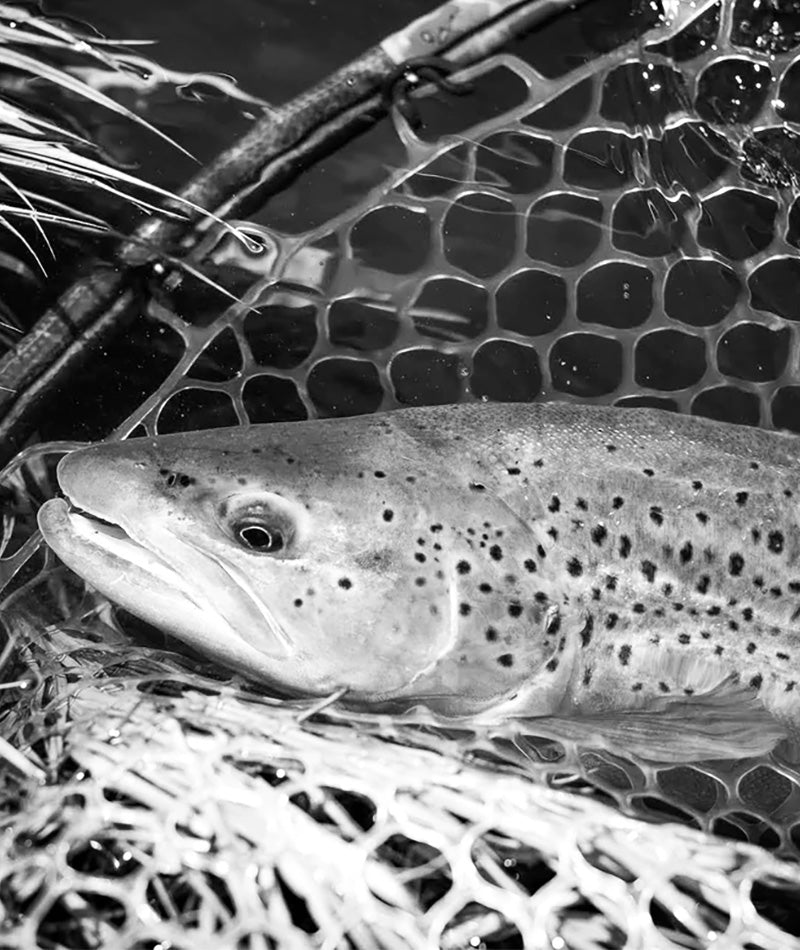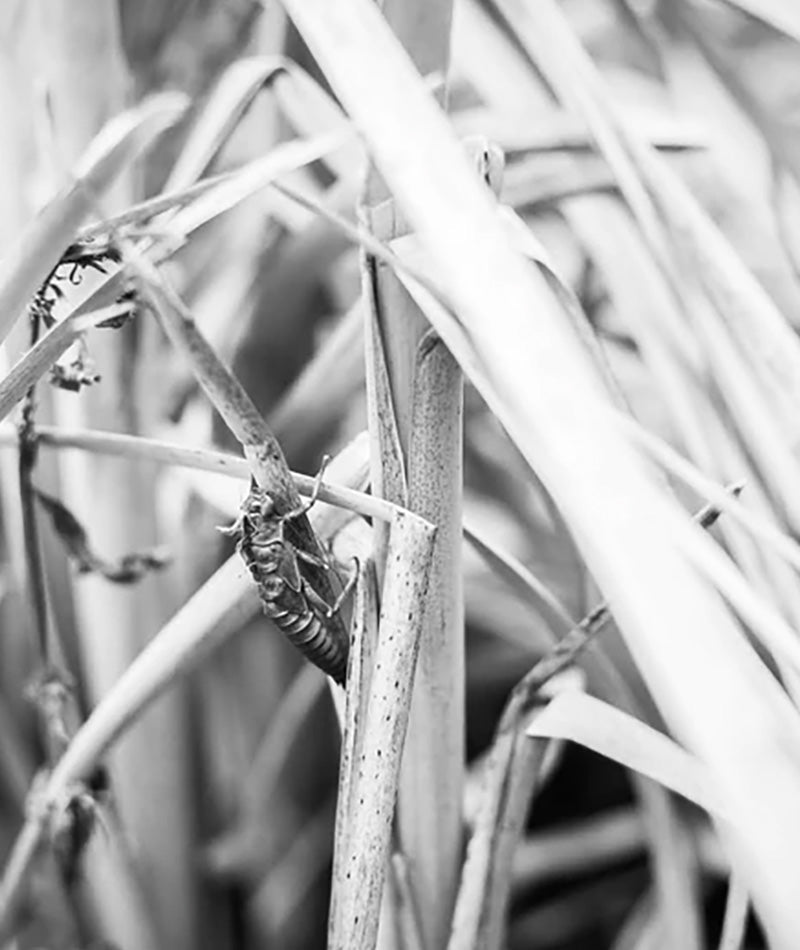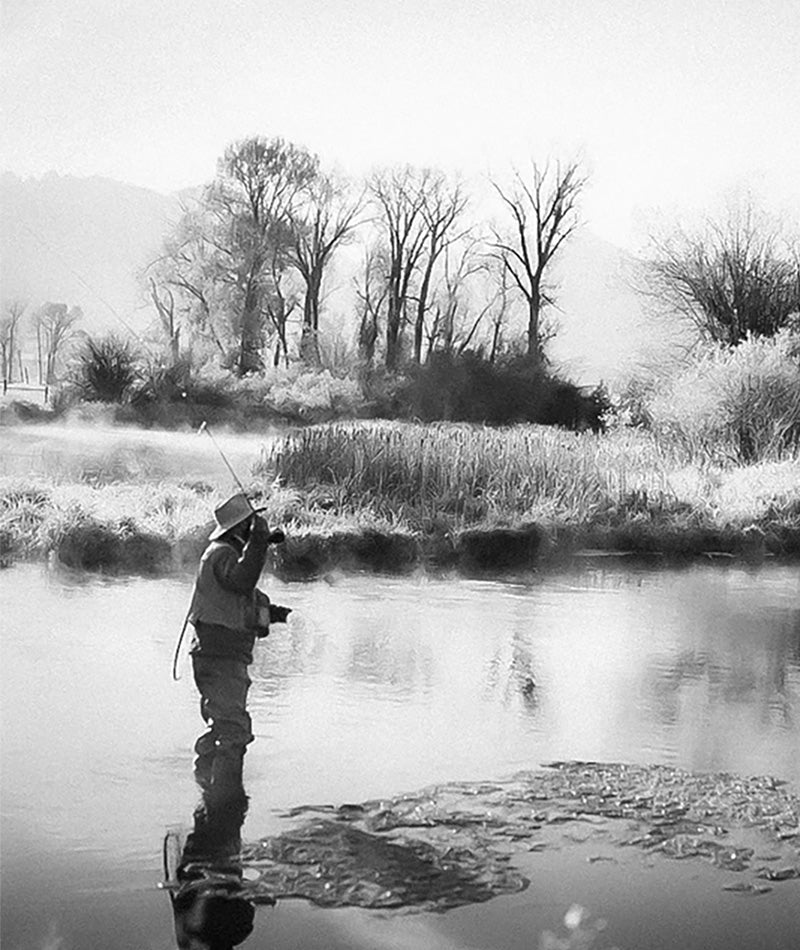
In Tom's Words
The new 4-weight, 5-weight, 6-weight, and 7-weight 4-piece rods are designed and they are spectacular. The 5-weight final prototypes were finished just in time to be evaluated for the popular Yellowstone Angler 5-weight 2016 shootout. They evaluate 30 of the most popular 4-piece 5-weight graphite rods available and our new rod is tied for first place for performance! A great testimony to the new rod designs. The new 4-piece rods have the well-proven spigot ferrules providing very smooth casting rods the evaluators were extremely impressed with. Almost all of today's rods have the tip over ferrule design that is just not as smooth as the spigot design that feels like a one-piece rod.
Back Then
Kerry Burkheimer is making our graphite blanks using our mandrels and patterns. We are extremely pleased with his great quality and our wonderful working relationship. He has been extraordinarily helpful in getting our prototypes and now our finished blanks. I also have to compliment him on the quality of the blanks they are the straightest I have ever seen!

Fiberglass Strategy
I decided to design these 4-piece graphite rods because so many anglers are now traveling, particularly by flying, to their fishing destinations the demand for multi-piece rods has grown substantially. The models are 8 1/2 foot 4-weight, 5-weight, and 6-weight along with 9 foot 4-weight, 5-weight, 6-weight, and 7-weight. The 9-foot trout rods are a small departure from my philosophy of the 8 1/2 foot rods being the most fun to fish because of their shorter length and lighter, livelier feel but the purpose of these is somewhat different. The new 8 1/2 foot 4-weight, 5-weight, and 6-weight will still have a very similar feel to our present rods only be 4-piece for easy transport. The 9 foot 4-piece rods in 4-weight through 7-weight will still work well for dry fly fishing and small nymphs but are specifically designed for those wanting a longer rod to fish weighted flies, or multiple flies, and sometimes weight along with a floating indicator either by wading or from a boat. They will provide the extra reach and length to keep line off the water and to help set the hook for flies fished under the surface. These rods are only very slightly stiffer than my traditional designs but nothing like so many of the very stiff rods most manufacturers are making today.
On the new 4-piece rods I have also worked hard to keep the same progressive action with the smoothness and the light, lively feeling so prized by anglers by using continuous taper blanks with spigot ferrules and keeping the weight down using light-weight guides. After casting numerous prototypes with different guides the best combination for the 9-foot rods was the Snake Brand e-coated ultralight guides with our traditional agate stripper. These guides are extremely hard for great durability and flexibility for protection from damage. On the 8 1/2 foot, I decided to keep our regular lightweight snake guides in order to keep a similar feel to our regular 2-piece rods. The rods still use the lines recommended for them and flex the way they should.

A Passion
Fly fishing has been my greatest passion since my early teenage years, and, within that passion, fly rods and their action have always been my greatest love. It seems I have a special gift that allows me to visualize fishing conditions and to design rods that are well suited for anglers. My intention for these rods is to provide great casting rods that are fun to fish using dry flies, wet flies, and nymphs and to make rods fellow anglers love and enjoy fishing on their favorite waters.
Rod Materials
When I started thinking about the new designs I intended to use a slightly different material from what we use in our regular rods with a slightly higher modulus (stiffness factor) and a greater strain rate (resistance to breaking) than our traditional graphite. I started with our regular graphite which does have a new resin system increasing its strength and which has a very high strain rate. The designs using this material turned out to be terrific so I will use it. Using the same material as our regular rods also makes production smoother. This material has proven to be an excellent one since we have had very few rod repairs.
My past experience in helping anglers select their favorite graphite trout rods for dry fly fishing or using small nymphs has shown me, given an opportunity to cast both 8 1/2 foot and 9-foot rods, they often would choose the shorter length because it felt better. That was the reason for choosing the 8 1/2 foot length as our longest rod for our traditional series. However, anglers who have fished the new 9 foot 4-piece rods have raved about their great feel and how well they work on a great variety of waters so I accept their opinions and have changed mine. All of these new rods have progressive action with the smoothness and the light, lively feeling so prized by anglers.
Although most of our rods are sold via our catalog or our Internet web site, we have a considerable number of customers including many from Japan, who stop by our shop to cast our rods. It's extremely gratifying to let them cast our rods and to hear their praise for the rod actions. The comments I hear the most are the rods feel great, they are amazingly smooth casting, and they are sized correctly for the lines they are rated to cast. Our rods are very carefully designed to use a double taper or a long belly weight forward line of the size I recommend. Some of the newer lines are more heavily weighted towards the front portion to accommodate the newer and stiffer graphite rods. Those lines will tend to overload our rods so make sure you are using lines with traditional design. They will not cast, under normal circumstances, a line one size heavier.
Big or Small?
One aspect of my rod design that makes them different from most other rods currently on the market is the snake guide size. If you compare our rods to others the guides seem small, and you might think, too small to let the line pass through easily. The common misconception is the bigger the guides the better the line flows through them and the farther you can cast.

Final Thoughts
I have wrapped and cast identical rods with small guides and large guides and found just the opposite to be true. Apparently, the larger guides allow the line to slap around the rod too much and actually reduce the shooting ability of the line. Another aspect often overlooked, particularly on rods like ours with delicate and supple tips, is the larger guides weight the tip of the rods excessively and entirely destroys their subtle action. Trust me; our guides are of adequate size so the smaller, lighter guides are one of the things that make our rods feel so great.
There is one other important aspect of my rod designs I think is overlooked by other designers. This is a subtle point, but one I believe strongly makes the rods perform better for anglers. When you strike a fish, the rod tip behaves in accordance with Newton's law of motion; the tip goes down first as the opposite reaction to the butt going up. Then, as it catches up to the butt moving upwards, there is a lot of momentum in the tip. If the tip is too stiff and the guides are too heavy, the tippet may break on the strike. This is an all too common experience with most rods. The supple tips of these rods, along with the smaller guides, have less inertia when you strike a fish resulting in far fewer fish being broken off on the strike. Another benefit of the supple tips is they let you play fish without breaking the tippet.
In addition to being great fishing rods, our rods are also extremely beautiful and the workmanship is impeccable. Gerri and I go to great length to make sure every detail of the rod is perfectly executed. I am confident you will enjoy fishing our rods. We continually hear from customers who order their rods by catalog or over the Internet web site how pleased they are with them. Many of our customers buy more than one rod because, once they fish with them, the rods become their favorites and they want other sizes for other streams or conditions.









